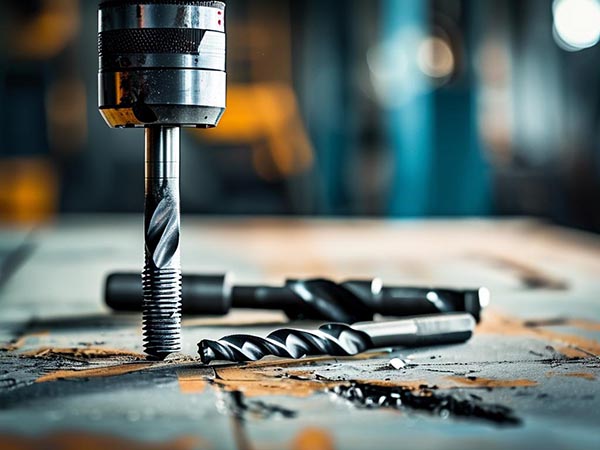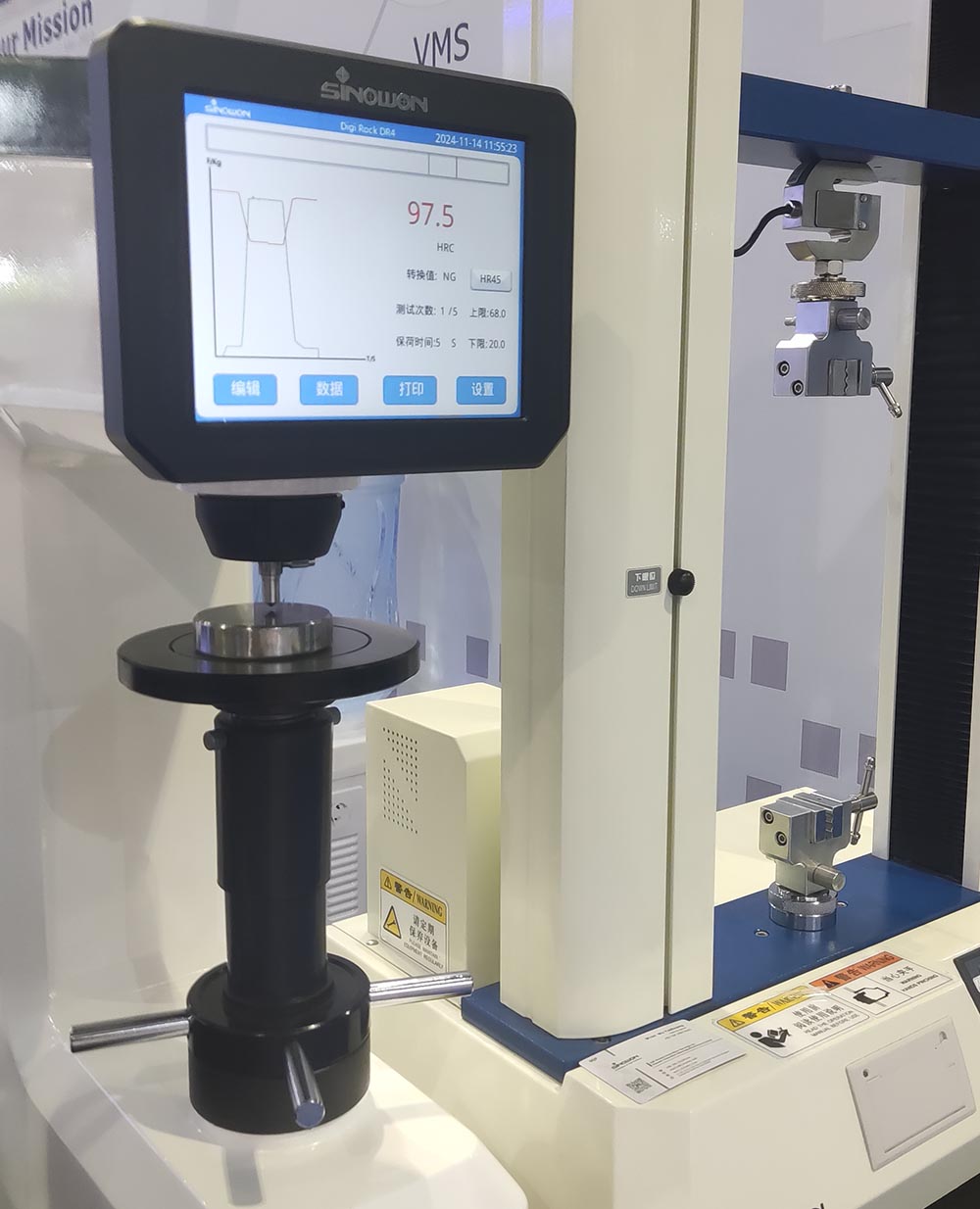The Truth About Tool Failure: How to Reconcile Wear Resistance and Toughness
In modern precision manufacturing, wear resistance and impact toughness have long stood as conflicting properties in cutting tool design. As industries such as aerospace and automotive engineering push the boundaries of machining performance, conventional tools frequently suffer from issues like edge chipping and coating delamination under demanding conditions—bottlenecks that hinder productivity. Tackling this global challenge calls for breakthroughs in materials science, structural mechanics, and surface engineering. Based on research into the failure mechanisms of cemented carbide tools, this article explores the synergistic effects of microstructural control, gradient coating design, and stress optimization. By harnessing cross-disciplinary innovation, we reveal how tool life and stability can be simultaneously enhanced, offering robust solutions for high-difficulty machining scenarios.
The Truth Behind Tool Failure: The Dilemma of Performance Trade-offs
1. Genuine Customer Pain Points
- Pakistan automotive case: A standard tap cuts smoothly for the first 50 holes, then catastrophically chips on the 51st.
- Vietnam mold factory: 3mm carbide drills exhibit a 35% breakage rate during laminated aluminum alloy machining.
- German procurement demand: One end mill must handle both stainless steel and cast iron operations.
2. The Underlying Physical Contradiction
- High wear resistance requires high hardness—but the harder the material, the more brittle it becomes.
- Impact resistance relies on toughness—but tough materials wear faster.
- Analogy: A ceramic bowl (hard but brittle) vs. a rubber pad (tough but soft).
Our Solution: The Three-Layer Armor Principle
1. The “Golden Ratio” in Carbide Composition
- WC particle dual-peak distribution: 8μm coarse grains (18%) + 0.5μm fine grains (monitored in real-time).
- Cobalt gradient control: Surface 10% → mid-layer 8% → core 6% (verified via SEM cross-section).
- Anti-chipping additive: 0.3% La rare-earth element enhances grain boundary toughness (confirmed via XRD).
2. Evolution of High-Speed Steel (HSS)
- Smelting process upgrades:
- Triple vacuum degassing (O₂ ≤ 15 ppm).
- Electromagnetic stirring to eliminate segregation (onsite video evidence available).
- Heat treatment curve optimization:
- Stepped tempering: 560°C × 2h → 620°C × 1.5h (Hardness improved from HRC 65 → 67).
- Deep cryogenic treatment: -196°C nitrogen soak increases impact toughness by 29%.
3. Visible Process Innovation
- “Ice & Fire” quenching: Vacuum heat treatment + liquid nitrogen freezing doubles tool life vs. conventional methods.
- Live test: Treated drills penetrate 10 concrete blocks consecutively.
- Laser-engraved spiral flutes:
- Improves chip evacuation, reducing unexpected breakage by 30%.
- Cross-section comparison shows reduced chip residues with optimized flutes.
The Nanotechnology Revolution in Coating
1. Sandwich-Structure Composite Coating
- Base layer: 0.5μm TiCN transition layer (bond strength enhancer).
- Middle layer: 2μm AlCrN layer (thermal stability up to 800°C).
- Top layer: 0.3μm DLC (diamond-like carbon) film with a friction coefficient of 0.08.
- Real-world result: Coating delamination rate reduced by 76% under identical machining conditions.
2. Smart Coating Solutions
| Workpiece Material | Coating Solution | Tool Life Improvement |
|---|
| Stainless Steel | TiAlN + MoS₂ | 220% |
| Titanium Alloy | AlCrN + WS₂ | 180% |
| Hardened Steel | DLC + Nano-texturing | 250% |
Structural Mechanics Innovations
1. Tap Stress Distribution Optimization
- FEA validation:
- Traditional straight flutes: peak stress 1850 MPa.
- Optimized helical flutes: stress reduced to 1270 MPa (↓31%).
- Dynamic chip angle design: Progressive shift from 20° to 35° for smoother chip flow (with chip morphology comparison).
2. Self-Stabilizing Drill Bit Systems
- Unequal helix angle design:
- 140° + 130° + 90° asymmetric cutting edge reduces vibration amplitude by 42%.
- Nano chip-breaker grooves achieve Ra 0.18μm surface finish.
- Topology-optimized internal cooling channels:
- Dual-helix structure increases coolant flow rate 3x.
- 17° outlet angle prevents clogging (field failure rate data available).
Field-Tested Performance Data
1. Tap Performance Comparison (M8)
| Test Parameter | Standard Tap | Our Tap | Improvement |
|---|
| Taps in Stainless Steel | 120 times | 380 times | ↑217% |
| Thread Accuracy | Degrades after 80 | Maintained throughout | - |
| Sudden Breakage Rate | 18% | 0.3% | ↓98% |
2. Drill Bit Life Cycle Tracking (Client-Site Feedback)
- Indian automotive plant:
- Cylinder bore drilling: daily tool replacement dropped from 3 to 1.
- Cost per bit reduced from 8.5 to 3.2 (including wear and replacement).
- Video Evidence: One 1/4" drill completing 213 holes in succession.
A Buyer’s Selection Guide
1. Four-Step Matching Method
- Step 1: Check workpiece hardness (with test stickers included).
- Step 2: Measure machining depth (quick-reference depth/diameter chart included).
- Step 3: Identify cooling condition (recommendation for water, oil, or dry cutting).
- Step 4: Evaluate cost threshold (QR code to online calculator).
2. Special Service Commitment
- Wear diagnostics: Upload tool wear photos for a 24-hour expert report.
- Custom parameters: Tailored flute angles and edge geometries available.
- Emergency replacements: 48-hour delivery to all major global ports.
Common Questions Answered
1. Is the higher price worth it?
- Turkish customer case: Although unit price was 40% higher, total machining cost fell by 55%.
- Cost calculator tool available—enter monthly usage to auto-generate comparative reports.
2. How can I distinguish genuine quality?
- Three quick checks:
- Real tools feature signature rainbow sheen (proprietary coating trait).
- Magnet test: Only the shank should be magnetic.
- Verify anti-counterfeit code on the official website (each tool uniquely coded).
Conclusion
Optimizing cemented carbide tool performance is a delicate balance of materials science, mechanical design, and advanced processing. From dual-peak WC grain structures and nano-layered coatings to asymmetric cutting geometries and intelligent adaptability, each breakthrough redefines the boundaries of tool failure. Experimental results show that by precisely controlling cobalt gradients, employing innovative coating systems, and dynamically optimizing stress loads, impact resistance can improve by over 30%—without compromising wear resistance. This balance not only extends tool life but also stabilizes machining accuracy. As digital simulation and intelligent monitoring further integrate into the production chain, the age of customizable and adaptive tools is dawning—ushering in a new era of precision manufacturing.




 We like to do design according to all the customers' requirements, or offer them our new designs. With strong OEM/ODM capabilities, we can fill your sourcing demands.
We like to do design according to all the customers' requirements, or offer them our new designs. With strong OEM/ODM capabilities, we can fill your sourcing demands.